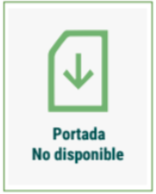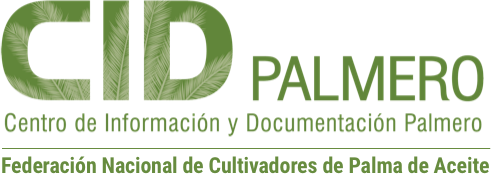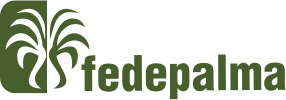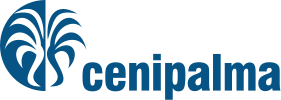Evaluation of two nectar producing plant species in the attraction of beneficial insects

Author
Argumero, Andrés
Aldana de la Torre, Jorge A.
Calvache G., Hugo H.
Celis A., Luis A.
Estadisticas
Publicación:
Revista Palmas; Vol. 21 Núm. especial, (2000); 201-202
0121-2923
Revista Palmas; Vol. 21 Núm. especial, (2000); 201-202
0121-2923
Abstract
The plants that grow on the oil palm fields which present extra-floral nectar producing systems have become the main support of the beneficial insect fauna in oil palm plantations. This is true for plantations that have integral plague management which include sow and multiplication of beneficial plants that grow at the borders of the lots. For this, it is necessary to know the physiology of the plants and its direct relation to the parasites. This work pretends to establish the number of parasites that visit the leafs of the extra-floral nectar producing Urena sp. and Triumfetta lappula at different times of the year. The work took place in Indupalma plantation, located in San Alberto, Cesar. Urena sp. and Triumfetta lappula were sowed in the borders of the lots. Periodically, with the help of a net, the insects that arrived to suck the sugar of the nectarean plants were collected. Likewise vegetative measurements of the leafs and rainfall data were noted, as well as the number of nectarean insects and its functionality. 56 mono-species were collected which belong to eight families, especially those belonging to Braconidae and Chalcididae. A direct relation between the leaf size, the viability of the nectarean and the number of captured parasites was established. The reproductive period takes place during dry season, supplying the unfunctional nectarean insects. It was possible to conclude that during the whole evaluation process functional nectareans were always found. Even though the population of parasites decreases in dry season, they did not Las plantas arvenses que presentan nectáreos extraflorales se han constituido en el principal soporte de la entomofauna benéfica en plantaciones de palma de aceite donde se cuenta con programas de manejo integrado de plagas que incluyen la siembra y multiplicación de arvenses en los bordes de los lotes. Para ello es necesario conocer la fisiología de las plantas y la relación directa con los parasitoides; este trabajo pretende establecer el número de parasitoides que visitan los nectáreos extraflorales presentes en las hojas de Urena sp. y Thunpheta lappula en las diferentes épocas del año. El trabajo se realizó en la plantación Indupalma ubicada en el municipio de San Alberto departamento del Cesar, se sembraron las arvenses Urena sp y T. lappula en los bordes de los lotes y periódicamente con la ayuda de una jama se colectaron los insectos que llegaban a libar los azúcares producidos por los nectáreos, igualmente se tomaron medidas vegetativas de las hojas, datos de precipitación y se cuantificó el número de nectáreos y su funcionalidad. Se colectaron 56 morfoespecies pertenecientes a ocho familias desatancándose por su abundancia Braconidae y chalcididae, se pudo establecer una relación directa entre el tamaño de la hoja, la viabilidad de los nectáreos y el número de parasitoides capturados, el periodo reproductivo (floración) se da durante la época seca, supliendo los nectáreos que no son funcionales. Se pudo concluir que durante todo el proceso de evaluación siempre se encontraron nectáreos funcionales y aunque la población de parasitoides decrece en la época seca, no desaparecieron.
The plants that grow on the oil palm fields which present extra-floral nectar producing systems have become the main support of the beneficial insect fauna in oil palm plantations. This is true for plantations that have integral plague management which include sow and multiplication of beneficial plants that grow at the borders of the lots. For this, it is necessary to know the physiology of the plants and its direct relation to the parasites. This work pretends to establish the number of parasites that visit the leafs of the extra-floral nectar producing Urena sp. and Triumfetta lappula at different times of the year. The work took place in Indupalma plantation, located in San Alberto, Cesar. Urena sp. and Triumfetta lappula were sowed in the borders of the lots. Periodically, with the help of a net, the insects that arrived to suck the sugar of the nectarean plants were collected. Likewise vegetative measurements of the leafs and rainfall data were noted, as well as the number of nectarean insects and its functionality. 56 mono-species were collected which belong to eight families, especially those belonging to Braconidae and Chalcididae. A direct relation between the leaf size, the viability of the nectarean and the number of captured parasites was established. The reproductive period takes place during dry season, supplying the unfunctional nectarean insects. It was possible to conclude that during the whole evaluation process functional nectareans were always found. Even though the population of parasites decreases in dry season, they did not
Palabras clave:
palma de aceite
elaeis guineensis
insectos útiles
manejo integrado de plagas
plantas arvenses
plantas nectaríferas
control biológico
palma de aceite
elaeis guineensis
insectos útiles
manejo integrado de plagas
plantas arvenses
plantas nectaríferas
control biológico


